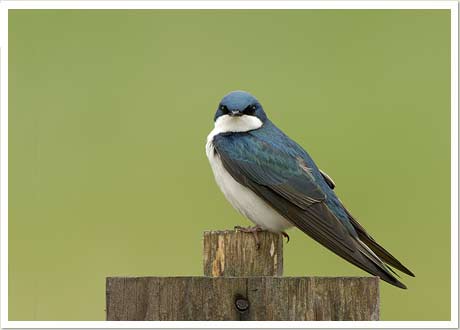|
| Tree Swallow |
PHOTO: 1 2 3 |
 |
|
 |
 |
| Tree Swallows are common in spring and summer. The first spring migrants fly low over the dunes and marsh to find flying insects. By early summer, only a few remain to breed in nest boxes, feeding large broods of chicks. In late summer, thousands of migrant swallows join the newly fledged birds, congregating to feed on abundant airborne food and the late-summer crop of bayberries. A few swallows may remain later in the fall, sustained by bayberries and scarce flying insects. |
|
|